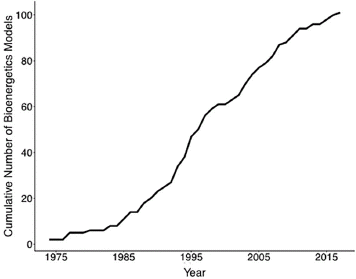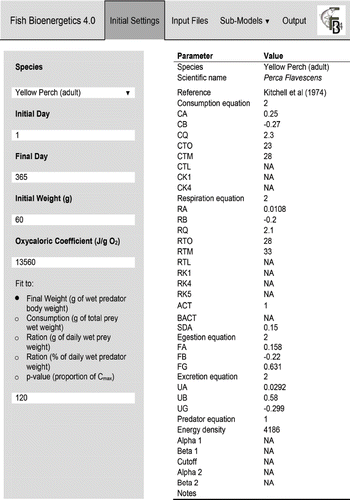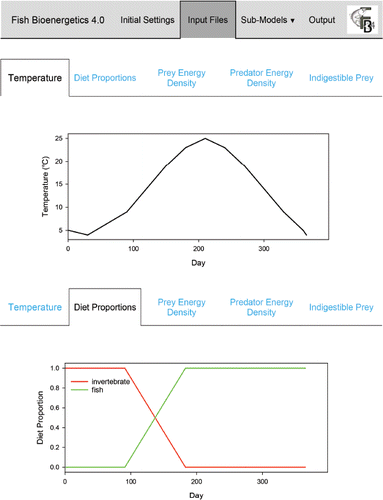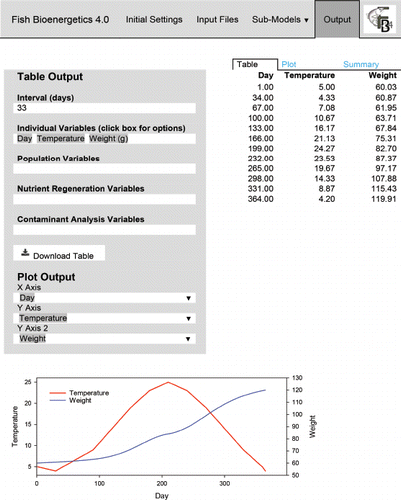Figures & data
Table 1. List of models included in Fish Bioenergetics 4.0 (FB4). Bioenergetics models that are new to FB4 are indicated by an asterisk (*). † denotes new or revised versions of existing models found in previous versions of Fish Bioenergetics software. A = adult, J = juvenile, L = larvae.






